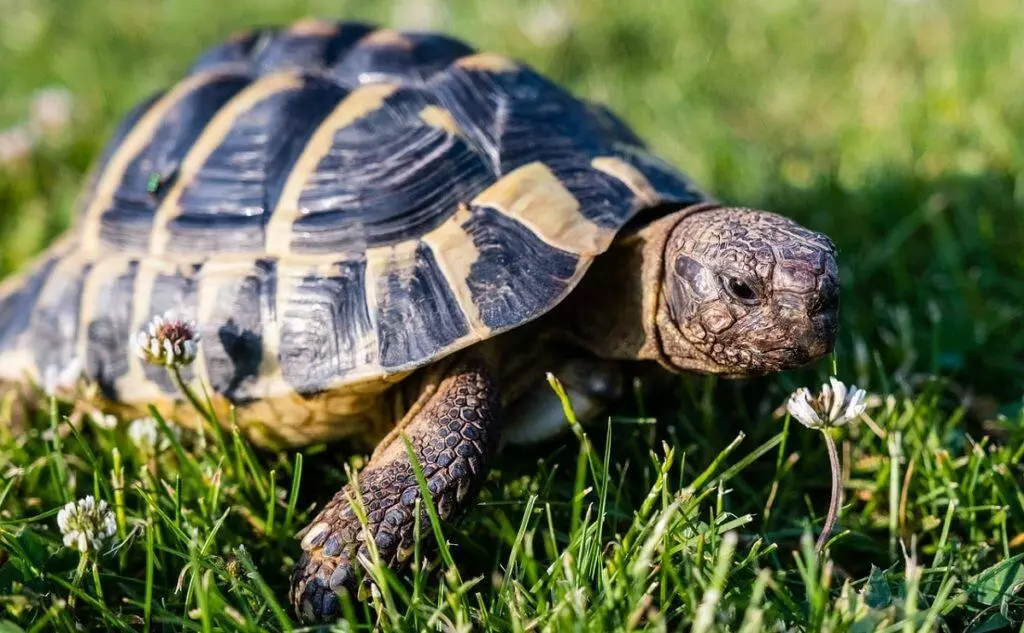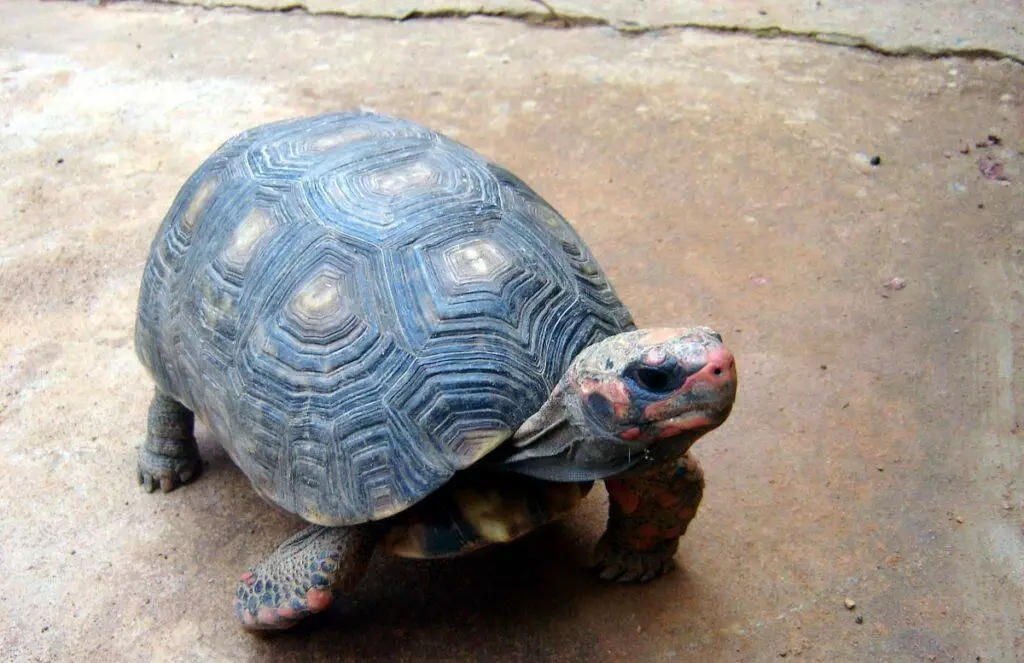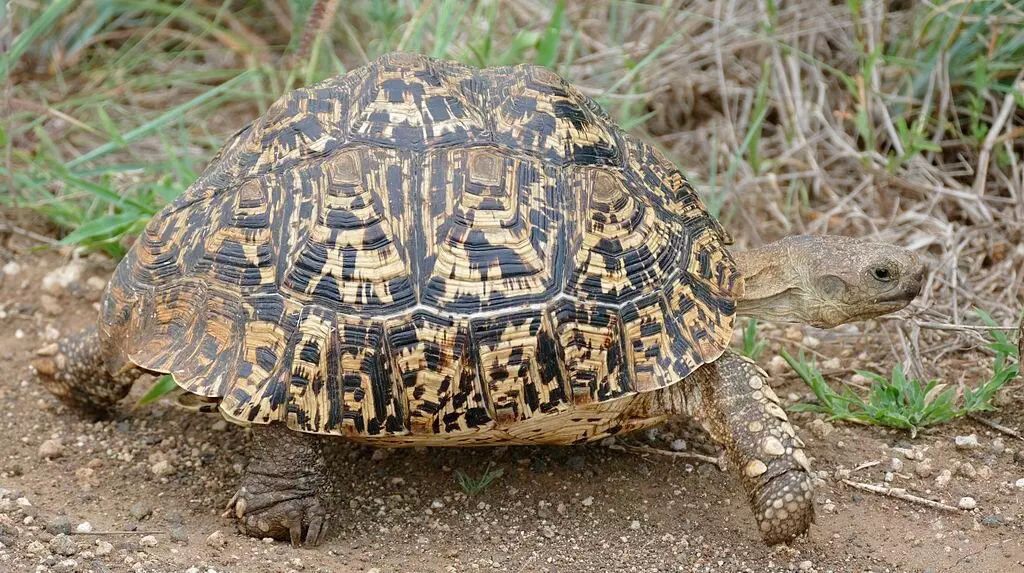Tortoises are calm, friendly and often entertaining, so it is no wonder that they are a popular choice for exotic pets.
While they are not native to the UK, it is thought around 1% of all homes own one, which makes them just as popular as hamsters, snakes and guinea pigs.
But since they’re not as domesticated as cats and dogs, it’s not always easy knowing which tortoise is right for a first-time owner. Don’t worry, the team at Petz is on hand to make things clearer so you can decide which species of one of these wonderful reptiles is the right one for you.
The essentials to keeping a tortoise
Firstly, no matter what breed of tortoise you have, there are some musts:
- Tortoises require UVB light to synthesize vitamin D3. All indoor enclosures should include a 10% fluorescent UVB tube light with a reflector that angles the rays down to the tortoise
- Tortoises are all plant-based. While how you make up their diet depends on the breed and where they are from, most will survive on a diet of leaves, vegetables and small amounts of fruit every so often.
- A tortoise needs space. Most will benefit from outdoor explorations, especially in summer. Enclosures should be sunk into the ground, and non-seethrough so they are less likely to escape.
- They need calcium for bone structure and growth. Vitamin D3 from their lighting helps them absorb calcium, but they may need some calcium supplements.
- A tortoise needs a substrate to allow them to dig, as well as a large enough table or enclosure.
- Their lifespan can depend on the exact breed, but expect anything between 50 and 100 years.
The best tortoise breeds for beginners
Some breeds are easier to care for than others. Things to bear in mind include the size they grow to, the amount of food they require and any other care needs.
1. Greek Tortoises
Greek tortoises, also known as the Mediterranean Spur-Thighed Tortoise, are usually recommended to first-time owners because they are significantly smaller than other breeds, reaching about 25cm fully grown, and are relatively easy to look after. They are also active in the day making them an easier pet to engage with.
A Greek tortoise is easy to identify because of its domed shell and golden black colour patterns. Although they are small, they can live for around 50 years which many people wouldn’t expect, but some have been known to reach 100! Therefore, they are a big commitment.

Like most other breeds, a Greek tortoise is a complete herbivore, so feeding them is pretty simple. Their diet consists largely of leafy greens like collard greens, broccoli, dandelion greens, and a small amount of fruit such as chopped raspberries, strawberries, or apples every few weeks or so.
Greek tortoises should have an environment that is 23°C-32°C, a UVB light, a hot basking area and 40%-60% humidity. For an adult, they need to be kept in a 3 x 6ft enclosure. Since tortoises like to roam, you should aim to provide as much room as possible.
Outside space is vital for all breeds, so you should allow them space outdoors too in nicer weather. They love basking in the sun! But some good news – Greek’s are terrestrial, so can’t climb, meaning you don’t need to build tall fences.
2. Hermann’s Tortoise
The Hermann’s tortoise is another breed recommended to beginners because they are slightly smaller than the Greek tortoise. They have a unique single, horn-like claw found at the tips of their tails, differentiating them from other breeds.
They need an enclosure at 21°C to 26°C, giving you a slightly smaller area to get it right versus the Greek tortoise. A Hermann’s tortoise will also prefer outdoor housing to indoor, although will likely need to be kept inside throughout winter in the UK. A 2 x 4ft enclosure is the minimum required indoors.
Even though they aren’t much of a climber, they are good at it unlike the Greek tortoise, so any closed-off areas will need tall fencing. They love to run, dig, forage and sunbathe.
Hermann’s tortoises have a mild temperament, only biting if they feel they need to protect themselves. However, they generally don’t like to be handled often, preferring to stay grounded.
They can live for 75 years, so it is likely you’ll not only need to have no commitment issues but also arrange for their rehoming if something were to happen to you. Males can also become violent in the mating season if housed with females, so keep them separate unless you intend to breed them.
3. Horsfield’s Tortoise
Other common names for Horsfield’s tortoise are Russian tortoise, Afghan tortoise, Afghanistan tortoise, steppe tortoise, central Asian tortoise, and four-toed tortoise.
Horsfield’s tend to have a lifespan of 50 years, which is slightly shorter than some other breeds. They will grow anywhere between 4-8 inches long, and calcium and vitamin D3 powder supplements are recommended.
Natural grazing of safe grasses, weeds, and plants is ideal, but a variety of greens and hay can be a good substitute. As they are an Asian breed rather than Meditteranean, avoid fruits altogether.
Horsfield’s love to burrow, so if they are outdoors, you need to sink their fencing into the ground. They can tolerate a slightly fluctuating temperature but always aim for the high 20°C’s. One thing they don’t like is moisture and humidity, so avoid damp areas and keep everything dry and warm.
A 4 x 2ft tortoise table is ideal if kept indoors, although they do prefer to be outside. They’re aggressive to their own species, so it isn’t recommended to house two males together. If a male and a female, they need a very large enclosure with sightline breaks.
4. Cherry Head Red-Footed Tortoise
From South America, these are the cousins of the regular red foot tortoise and are closely related to the yellow foot tortoise too. Since they’re smaller, they’re a better choice for a first-time owner.
As you’ve probably guessed from their name, they have bright red/orange patches on their head and feet making them distinctive. They have almost identical care requirements to their larger cousins and are found naturally in areas of Brazil so contrary to belief, weren’t bred for humans.
Cherry head red-footed tortoises are intelligent creatures, quickly learning feeding routines and where everything is in their enclosure. Therefore, routine is important. They may not be ideal for anyone who can’t stick to regular feeding times. You should also expect to spend a few hours every week sorting their food and cleaning their table.
But they are shy, so it may take time until one of these little guys is calm around their owner. Excessive handling can cause stress. They’re very sensitive too, so can feel the slightest of touches and therefore need gentle handling.

Unlike some other breeds on our list, they aren’t massively territorial so can live with others of their kind. But they can get competitive over females and injure one another. Cherry head red-footed tortoises are typically active during the day and don’t generally hibernate.
A 3 x 5ft enclosure is recommended, which is slightly larger than for other breeds. Since these tortoises are native to more tropical areas, they will need more humidity in their environment. You should aim to maintain a humidity level of around 70% to 80%. A reptile hygrometer and humidifier will be vital.
Unlike many other tortoises, cherry head tortoises are omnivores with their diet consisting largely of leafy greens, some vegetables and fruit, and a small amount of protein. One small serving of moistened, low-fat cat food or lean meat every other week is enough.
Cherry head red-footed tortoises have grown in popularity over the years, and numbers are waning in the wild because of this. Therefore, only buy yours from reputable breeders. This is less of an issue in the UK than the rest of the world as they aren’t native, but it is still worth checking everything is above board.
5. Leopard Tortoises
Leopard tortoises are native to South Africa, Ethiopia, and Somalia. They are also one of the largest domestic tortoise breeds and also commonly live between 80 and 100 years, although 50 years is more common in the UK. Unsurprisingly, their name comes from the markings on their shells which emulates the big cat.

They are slow, good-natured and quiet. They’re unlikely to bite or be aggressive towards humans, but aren’t keen on being handled. If threatened, they will instead retreat into their shells.
Leopard tortoises aren’t climbers and don’t generally burrow, unlike some other breeds on our list. Males can get aggressive with each other in mating season in the wild, but in captivity, most are docile with other tortoises.
All of the above points regarding behaviour make them great for beginners. However, there are some conditions that mean they may not be for everyone:
- Leopard tortoises have no tolerance for the cold and need hot temperatures all year round. Between 23°C and 35°C is ideal in the daytime, with nighttime temperatures not going below 21°C.
- Humidity between 40% and 60% is great in the day and up to 80% at night.
- They need a lot of space, which can be a clincher. An enclosure around 10 x 10ft is perfect, which means they may not be ideal for smaller homes.
- Their diet largely consists of high-fibre grasses and greens. Avoid leafy greens that are high in oxalates, such as chard and spinach.
This could make them a better pet for anyone familiar with keeping tortoises or reptiles, however, their docile behaviours make them a great pet if you’re willing to put in time and effort.
Final Note
Always research every breed of tortoise individually, in terms of food, humidity, space and behavioural attributes. Despite being the same animal, all breeds are different and require different care based on where they come from in the wild.
If you are ever unsure about anything, a vet is the first place to go. You should register your tortoise with an exotic vet who knows all about the animal.
Also, research everything before you buy a tortoise – winging it as you go along could cause detrimental health effects on your animal.

